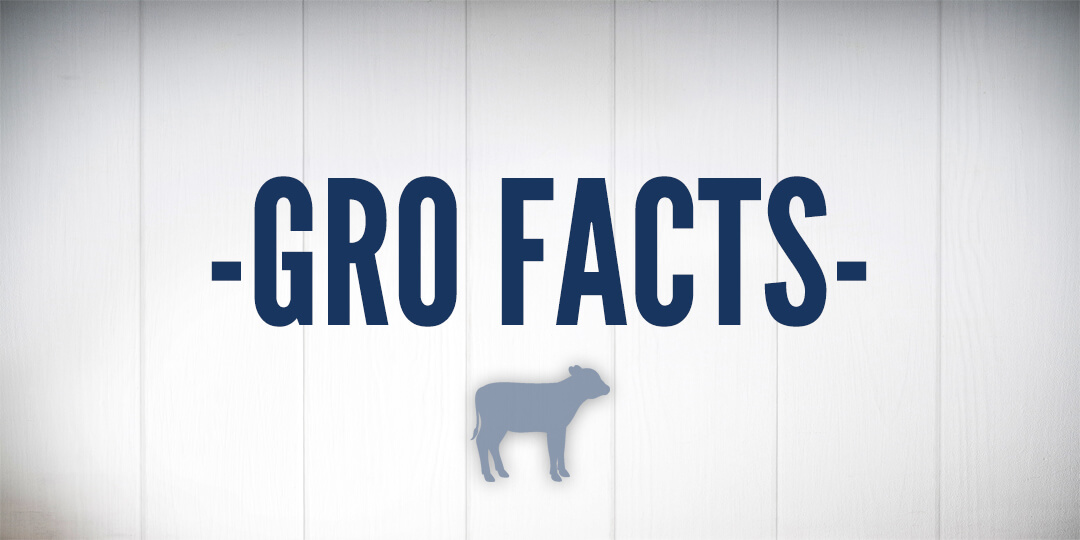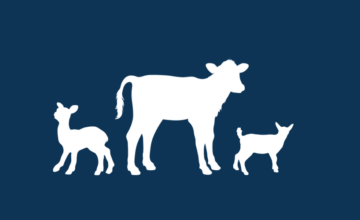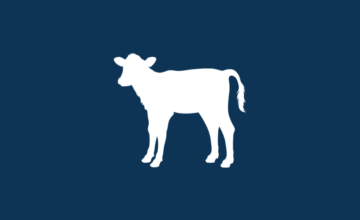Enhanced Feeding Producer Objectives
- Mar 31, 2009
- By Grober Nutrition
- In Canada
Why High Protein?
Capitalize on the rapid early growth potential of young calves. Meet the needs of the rapidly growing bone and muscle for protein. This encourages greater lean tissue deposition and thus stature without excess fattening.
Why Specific Protein:Fat Ratio?
Provide the correct protein to fat ratio at these higher feeding rates, to better promote muscle and skeletal growth so that increases in stature are attained. The high digestibility of lactose and the requirement for energy by the calf must be balanced for fat and protein.
Why Higher Feeding Rate?
Feeding rate determines energy intake, which sets limits on the growth potential. Grober Excel is fed at a higher concentration (150g/l) and higher rate (14% BW) than conventional milk replacers to meet growth demands of the enhanced feeding program.
Milk Replacer Comparison
| Conventional feeding | ‘New’ enhanced feeding | |
| Concentration of MR % | 12.5 | 15 |
| Av.daily intake (grams /day) | 500 | 750-900 |
| No. feeds per day | 2 or ad lib | 2-3 or ad lib |
| Av. daily growth rate (grams/day) | 400 | >800 |
| Typical CP % of MR | 20 | 26 |
| Typical fat % of MR | 15-20 | 15-18 |
| Typical CP% of calf starter | 18-20 | 22 |
Calf Growth: What do you want?
Rapid growth of frame (skeleton and muscle): Optimal fat deposition: Transition to functioning ruminant. Differences in ADG to 90kg may not be large between the conventional and enhanced systems but the type of growth, i.e. enhanced lean tissue deposition and thus stature and the degree of body fatness will be lower with the enhanced feeding system. Rate of gain should not be the sole means of assessing the efficacy of a nutrition program for milk replacer fed dairy calves.
Potential Advantages
- Decreased time to breeding size and first calving – in most production systems, decreasing the age to first calving is the most economical practice to decrease replacement heifer costs. For every month increase in average first calving age an extra 2-3 heifers are needed per 100 cows.
- Increased efficiency of body size gain – cost of rearing a heifer increases as age at first calving increases. A heifer has a lower daily gain and makes less efficient use of feed because a larger proportion of her feed is needed for maintenance.
- Improved health and immune system when calves are gaining at higher levels. (IGF-1 important regulator of cells of the immune system, IGF’s correlated to growth rates- Drackley)
- Enhanced milk production ability – inadequate size at first parturition may limit milk production and conception rate during first lactation. (Hoffman et al, 1996) Increase in bodyweight at first calving from 400kg to 570-590kg gave an increase of 825litres over 305-day lactation (2.7 litres/day). (Keown, 1986)
Potential Disadvantages
- Increased investment of money during the milk feeding period.
- Increased fecal looseness of calves – fecal appearance tends to be less solid due to lower fibre intake from calf starter.
- Delayed rumen development and weaning – calves that are healthy, have good appetites and are growing, consume enough starter dry feed, to allow rumen development to continue after weaning, in support of that growth. High quality and high protein starter feed is paramount in maintaining the early growth advantage provided by this system. Intensity of management required for success – to avoid digestive upsets, maintain high levels of sanitation, providing adequate, clean water at all times. Starter intake of 900grams per day for 3 consecutive days must be achieved before weaning can occur.
Heifer Rearing Objectives?
Optimum heifer growth is a function of the time necessary to achieve first parturition with the correct bodyweight, height, age and development such that the animal may express its full lactation potential. This should be achieved in the most profitable way for given targets. In raising heifers, the largest cost inputs are feed and days of growth needed to achieve productive status. Maximizing the potential production and minimizing days to first calving can help in the overall herd economics. Too high a growth rate in the period from 3-15 months can have a detrimental effect on mammary gland development and thus future milk production potential. Feeding for higher gains in the early calf phase could offset excessive gains (>900g/d) in the heifer rearing stage, reducing the risk for impaired mammary development. Research has shown that first calving at 22.5-23.5 months is most economical, provided that the animals are of adequate size!
| Producer objectives | Product |
| High genetic heifer replacement targets with management flexibility | Grober Excel |
| Heifers with good daily live-weight gain on twice a day feeding | Grober High Performance |
| Dairy Replacements for standard breeds | Grober High Conversion |
Grober Nutrition
Recent Posts
Tags
Archives
- April 2024
- January 2024
- December 2023
- October 2023
- September 2023
- August 2023
- June 2023
- December 2022
- November 2022
- October 2022
- August 2022
- July 2022
- June 2022
- May 2022
- April 2022
- March 2022
- February 2022
- January 2022
- August 2021
- February 2021
- September 2020
- June 2020
- April 2020
- May 2017
- April 2017
- October 2016
- September 2016
- August 2016
- March 2016
- March 2015
- January 2015
- December 2014
- December 2013
- September 2013
- May 2013
- January 2013
- December 2012
- November 2012
- March 2012
- March 2011
- February 2011
- November 2010
- August 2010
- December 2009
- November 2009
- March 2009






